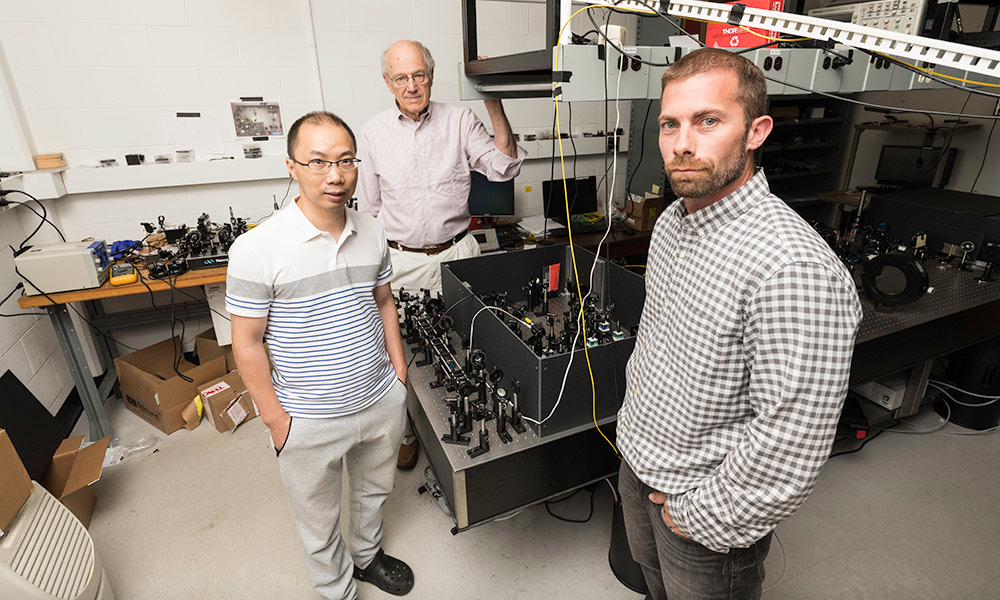September 6, 2018
A grain of sand is small and hard; a wisp of fog is wavy and nebulous. And we know that fog’s very nature prevents it ever being small and hard like a sand grain, and we’re sure that a sand grain can’t take on the loose wave character of fog.
And yet, for 90 years physicists have known that these incompatibly opposite properties are inherent in all elementary particles – such as electrons, photons, and mesons – and any of them can be observed to have either property at any time.
Nobel laureate Niels Bohr, the founder of modern atomic physics, attempted to resolve this existential dilemma of quantum mechanics by a kind of high-level wordsmithing. He invented the principle of complementarity, which simply asserts that, in some experiments, quantum objects will be found to be localized and act like particles, and in different experiments exactly the same quantum object will be spread out and act like a wave.
Now University of Rochester researchers, in a paper published in Optica, say they’ve resolved this weird—a term used by physicists themselves—and inescapable wave-particle duality by discovering the intimate connection between duality and another equally weird feature of quantum mechanics, namely entanglement.
Lead author Xiaofeng Qian, a research associate at the University’s Institute of Optics; Nick Vamivakas, associate professor of quantum optics and quantum physics; and Joseph Eberly, the Andrew Carnegie Professor of Physics, conclude that each of the features of quantum weirdness—entanglement and duality—precisely controls the other.
Entanglement is the quantum mechanical behavior of two particles in which neither alone can be described, independent of the description of the other, even when the particles are separated by vast distance. This is the same property that Nobel Prize-winning physicist Erwin Schrödinger employed to explain his famous thought experiment involving a cat, a Geiger counter, and a bit of poison in a sealed box. More recently, entanglement has become an essential element in the on-going development of quantum computation and quantum information science.
The Rochester finding grows from a discovery about duality made by William Wootters and Wojciek Zurek, two physics graduate students at the University of Texas at Austin, when thinking about a famous optics experiment done by Thomas Young around 1800. Young detected the wave-like features of sunlight coming through two extremely narrow slits in an opaque screen.
In 1979 Wootters and Zurek predicted that both wave-like dispersal and particle-like localization of the light could be measured in the same experiment, but the sum of the measured amounts could not be greater than 1.
The Rochester researchers, however, point out that a Young-type two-slit experiment could also result in both measures being zero, which contradicts Bohr’s principal of complementarity.
“According to the conventional interpretation, that means that neither a particle nor a wave is present, but there is still light detected,” Qian says. “So, what is that?”
The missing feature, the Rochester researchers show, is the control of duality by entanglement, in plain sight but overlooked for decades. Their paper contains both a theoretical prediction and an experimental confirmation.
The result is the first full description of complementarity, a missing piece of the quantum weirdness puzzle. By outlining a way to take entanglement into account, along with wave-ness and particle-ness, the Rochester work means that every Young-type experiment involving duality will deliver a measured sum with exactly the value of 1, which satisfies the conditions outlined by Bohr more than nine decades ago.















